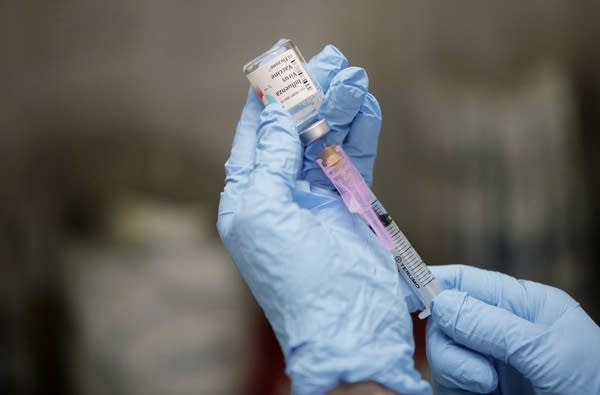New Zealand offers clues to H1N1's future

The Health Department believes the H1N1 virus could return later this winter and cause another wave of illness, but multiple H1N1 waves did not occur in the southern hemisphere's flu season this year.
Some past pandemics have had more than one wave during the same flu season, including the severe pandemic of 1918. If what happened in New Zealand happens here though, it won't be long before H1N1 is no longer leading the daily news.
"This virus has basically vanished," said Michael Baker, a pandemic researcher at the University of Otago in Wellington, New Zealand. "Our flu season is finished. So this came quite early, dominated our influenza season early on and now it's gone."
Baker wrote an editorial for the journal Eurosurveillance on the lessons of the H1N1 pandemic in the temperate regions of the southern hemisphere.
Create a More Connected Minnesota
MPR News is your trusted resource for the news you need. With your support, MPR News brings accessible, courageous journalism and authentic conversation to everyone - free of paywalls and barriers. Your gift makes a difference.
In New Zealand, Baker said the outbreak took off rapidly in June. It peaked 4 to 5 weeks later and then declined over another 6 weeks.
"The thing that struck us was that it was all very short," he said. "It was largely over within about 2 to 3 months."
The same pattern occurred in Australia, Brazil, Peru and South Africa. None of those countries experienced a second wave of H1N1 illness - just the occasional sporadic case here and there as the flu season drew to a close.
Baker thinks North America can expect a similar virus pattern from H1N1 this winter as long as the virus doesn't change.

"There's no particular reason why it should stage a comeback later on, because that's just not the nature of these infections that are transmitted person-to-person," he said.
Once a flu virus sweeps through an area, Baker said it has a difficult time gaining traction again because a segment of the population has developed immunity to the bug. That's why flu viruses mutate so frequently--they change so they can survive by infecting more people.
The two hemispheres aren't completely analogous
So far H1N1 has not shown any significant mutations since it first emerged in April. Anthony Mounts, who leads the global pandemic monitoring and assessment team for the World Health Organization based in Geneva, finds that very encouraging.
Mounts agrees with Michael Baker that the southern hemisphere only experienced one wave of H1N1 flu, but he is not convinced that North America will avoid multiple outbreaks based on that experience. He said there are geographic reasons why the virus could linger longer here than it did in the southern hemisphere.
"Any of those countries that we're talking about are much smaller in terms of numbers of people or land mass compared to the U.S. and Canada," he said. "So on a nationwide scale it may take a little longer than that to completely pass."
Mounts also thinks that the timing of the outbreak in North America works in the virus's favor. That means another wave of illness is more likely.
"The season has occurred very early in North America. And what that means is once that means once this passes there's still a lot of winter left, a lot of period of time when conditions are right for transmission of influenza," he said.
In contrast, he said the H1N1 outbreak in southern hemisphere countries coincided with the peak of their typical influenza season. So after the first wave of illness passed, spring was right around the corner. It's usually much harder for flu viruses to spread in warmer weather.
Mounts said the one thing that could help ensure a speedy end to the H1N1 outbreak in North America is a successful vaccination campaign - one that vaccinates the people most likely to spread the virus--in this case school-age children and young adults.
So far there appears to be a lot of demand for the vaccine among those groups. But it's not clear if that demand will persist in light of the waning outbreak, the ongoing difficulties in obtaining the vaccine and the distractions of the holiday season.
